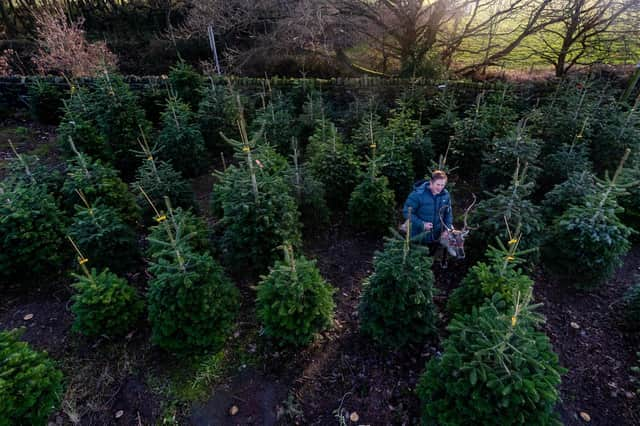Dr's Casebook: Christmas tree is a symbol of hope amid Omicron gloom


Dr Keith Souter writes: Right at the centre of the celebrations is the Christmas tree, which brightens up the home and lifts the mood.
It is what everyone needs amid the gloom following the wildfire spread of the Omicron variant
Advertisement
Hide AdAdvertisement
Hide AdIf you have a cut Christmas tree it may surprise you to know that each of its cells has seven times more DNA than a human cell.
Why it should have so much DNA puzzled scientists for decades until they began to work out the genomes of conifers.
It is a fact that coniferous trees dominated major parts of the world for hundreds of millions of years.
Some 300 million years ago they developed a genetic code, hence so much DNA, that allowed them to survive first a major geological disaster and then the meteorite impact that caused the extinction event that wiped out the dinosaurs.
Advertisement
Hide AdAdvertisement
Hide AdThe genome is the name given to all of the genetic information of an organism, which is contained in every one of its cells.
The genomes of conifers are of immense importance in forestry and in ecology as we grapple with the problems of climate change.
This is why the science of genomics is so important.
Study of the human genome is opening up a whole new era of medical science.
A recent meta-analysis of nearly 50,000 patents across 19 countries has discovered 13 specific sites on chromosomes that are associated with susceptibility to Covid or to severity of the disease.
Advertisement
Hide AdAdvertisement
Hide AdIn time this well help us to predict who is most likely to get very ill and therefore tailor the anti-viral treatments that are being developed for them.
Continuous genomic surveillance across the countries of the globe has permitted sequencing of the Covid-19 genome so it has been possible to see how it is evolving.
Thus, from the first finding of unusual variants in South Africa in November and collaboration of scientists in many countries it took just three days until the World Health Organisation declared it a variant of concern and labelled it Omicron.
Genomics is unravelling amazing things about Christmas trees, humans and the coronavirus and gives us hope amid the gloom.
Enjoy your Christmas.